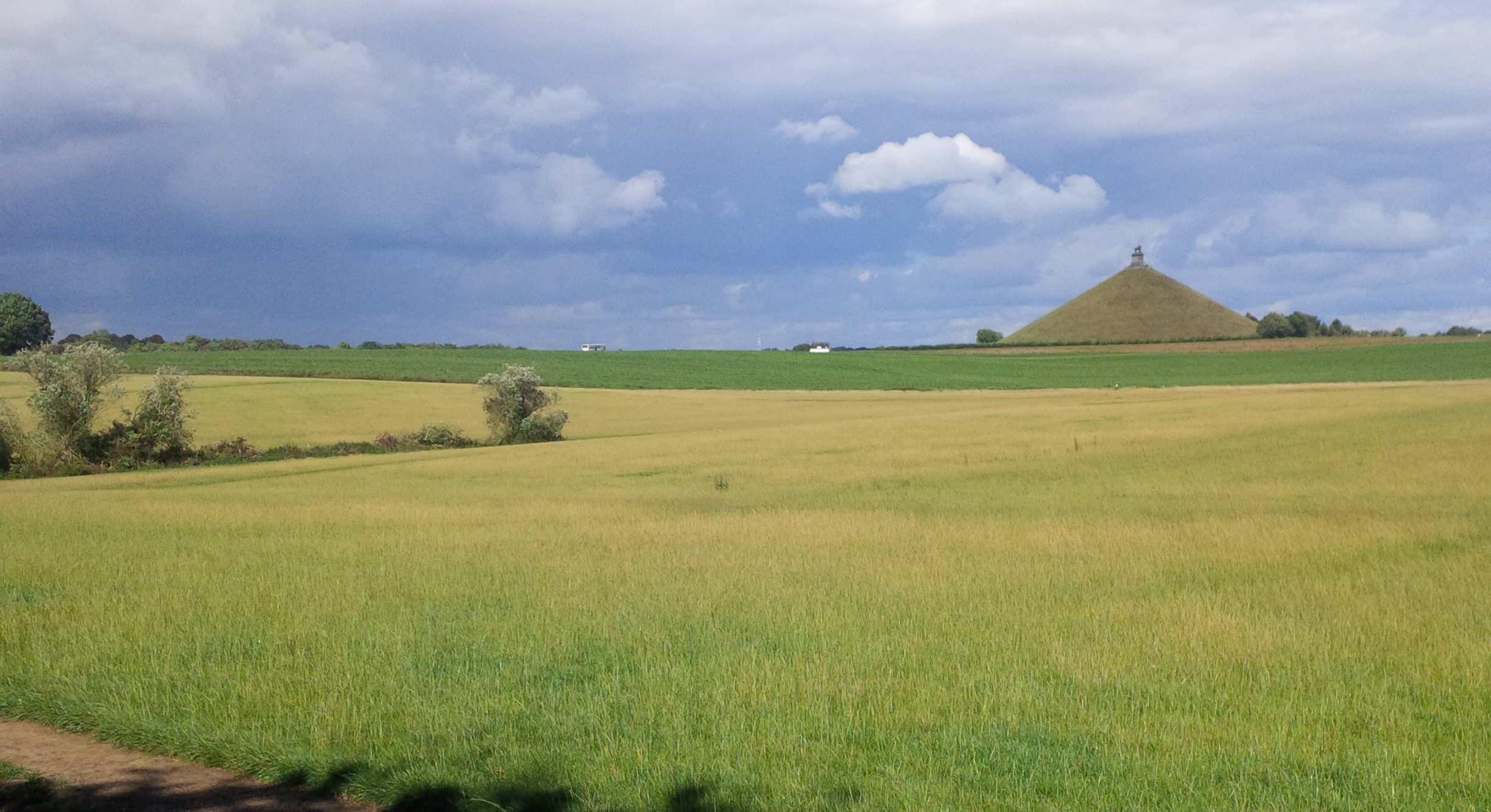
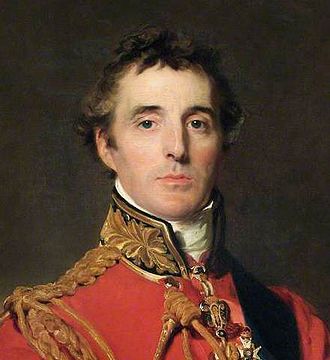
Visit this Famous Battlefield.
Europe is littered with historic battlefields yet, perhaps, none is more honoured or revered than the one at Waterloo. Regardless of the fact that nearly a ¼ million combatants took part making it, in pre-20th century terms, a substantial battle, Waterloo holds a much higher significance in European history and in all our consciousness’s even to this day.
A visit to Waterloo is a true “must” for anyone with even just a little interest in History as this battlefield, perhaps like very few others, is able to convey superbly not only an understanding of the tactics and heroism of the day but also the image of blood, thunder and carnage that took place on the 18th June 1815.
It also brings an understanding that the Army that Wellington led was indeed a truly international one and not made up of merely British troops as is, perhaps, often forgotten in the UK possibly because the consequence of the battle was that Britain and its Empire became the true winners.
THE END OF A TYRANT
In simple terms which everyone, certainly in Britain, is taught and brought up to believe, is that Waterloo marks the final defeat of a tyrant (a description which, of course, will depend upon your personal point of view). But arguably and perhaps more importantly, the Battle marks the end for France of their most glorious period stretching back to the reign of Louis XIV.
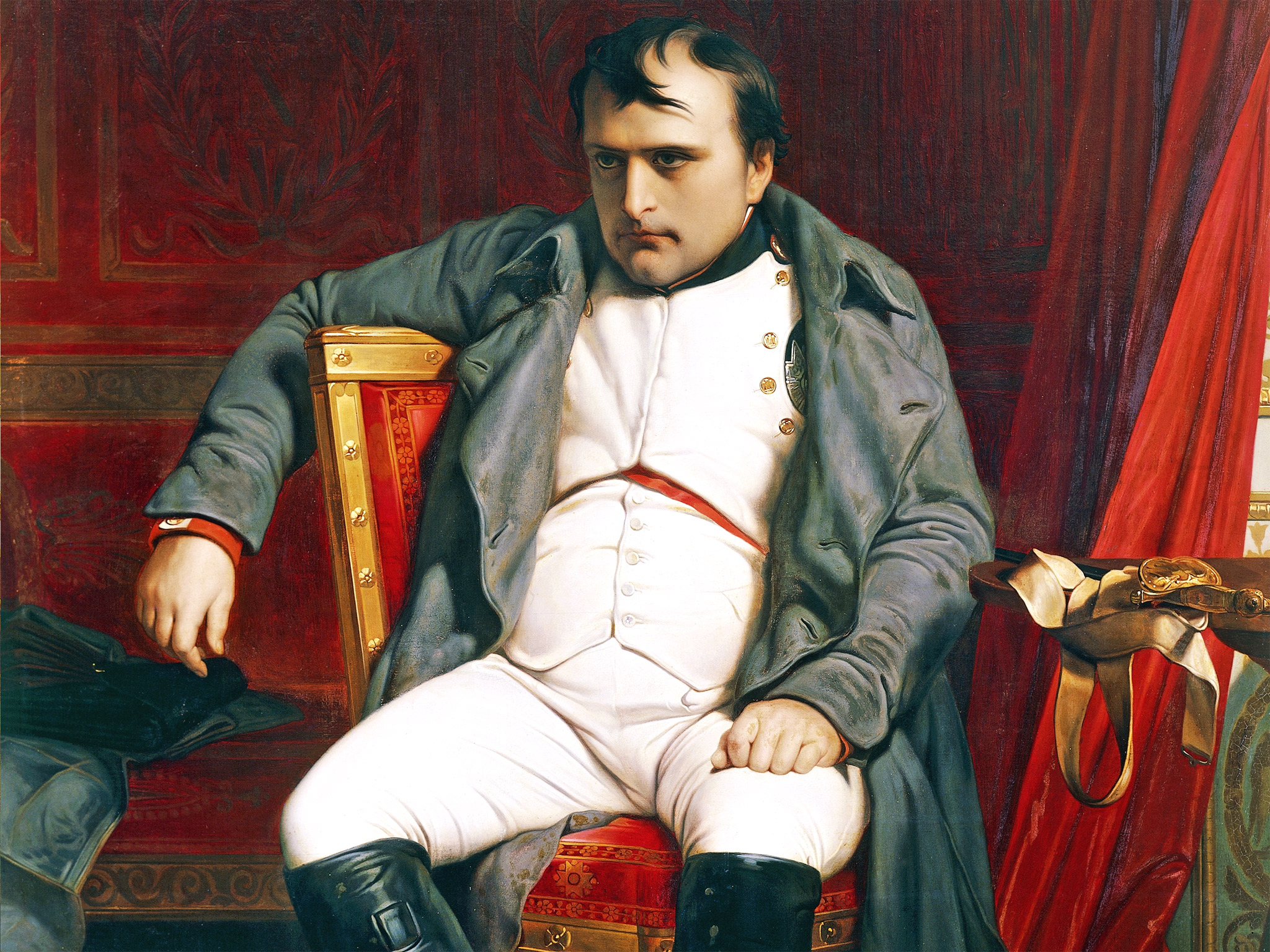
For many centuries earlier, France had been claimed in part or whole by successive European dynasties amongst whom were British monarchs. France was in part conquered, divided, sub-divided and re-divided as each dynasty fought for a slice of La Belle France.
For example, prior to the infamous English King John loosing half his French inheritance, King Phillip II of France controlled little more than the Île-de-France (the region around Paris).
But during the 17th and 18th Centuries France blossomed as a cohesive country and became a leading force in Europe. Such was their power and strength that the Dutch, who by this time had had much to fear from French machinations and military might (see Note 1 below), built after the Battle the substantial monument at Waterloo consisting of a large mound topped by a lion with his foot on a sphere (which signifies global victory) looking at France and effectively saying, “Don’t try that again!” (Notes 2, 3 & 4)
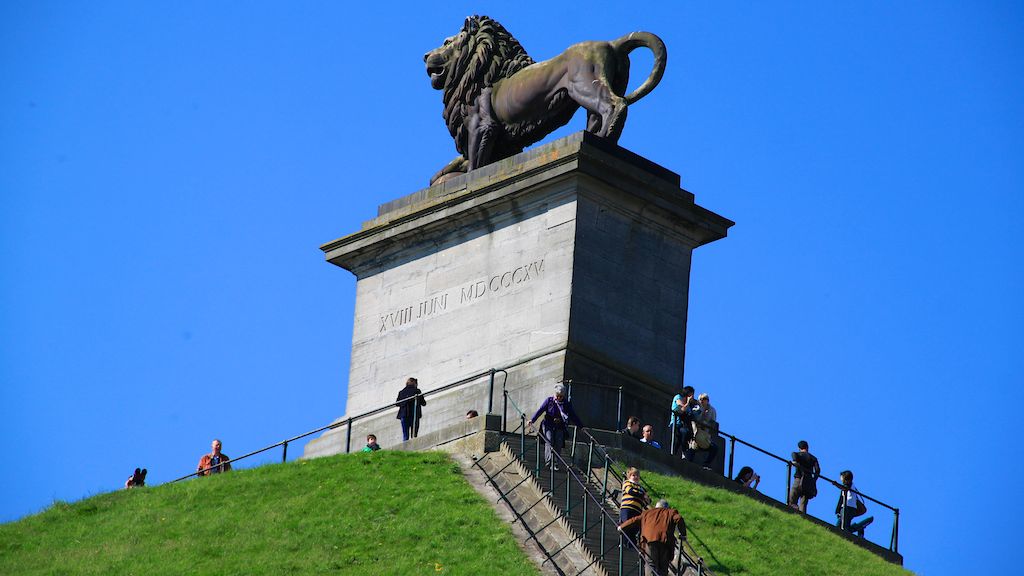
Indeed France was never to become that power again. Since its Napoleonic days it has largely been forced to playing the role of the defender rather than the aggressor much, one would suspect, it would be to the chagrin of the Great French Emperor.
A PUNCTUATION MARK IN EUROPEAN HISTORY
The Battle is also a significant Punctuation Mark in European History and sees the end of centuries of armed conflict propagated by the likes of Gustavus Adolphus (Gustav II Adolf) & Charles XII of Sweden, Louis XIV of France and Frederick the Great of Prussia. After the Battle, other than an interruption for the Franco-Prussian war in 1870, Europe was to experience an unfamiliar one hundred years of peace before descending once again into death and destruction in the First World War.
THE NEW VISITOR CENTRE
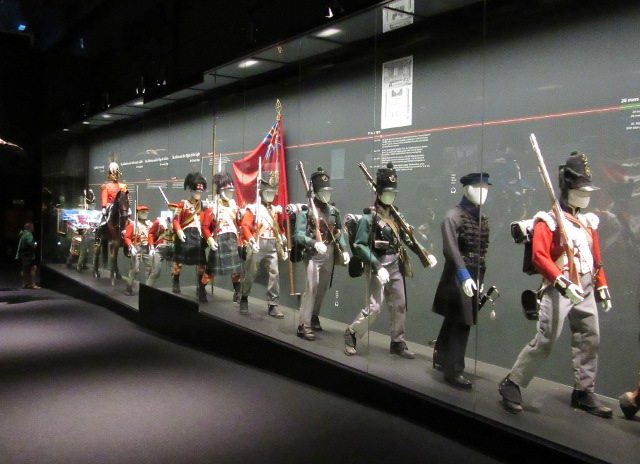
If you have not visited Waterloo for some time, you will notice some considerable changes. Gone are the small properties near the Lion’s Mound that used to be filled, in a rustic fashion, with memorabilia from the battle. They have been replaced by a new visitor centre (also adjacent to the Lion’s Mound) which has been constructed underground so as not to further impede visitors’ view and understanding of the topography of the battlefield.
There you will find new dynamic time-line displays, presentations and films are all worth seeing and they certainly help any visitors’ understanding of the battle and the events leading up to the battle. (Note 5)
TIME KEEPING AT WATERLOO
When looking at many of reports and documents about the battle there is often confusion as to quite what happened when and at what time. In part this can be explained by the fact that much of the British element of the Allied army, especially the military command and staff, arrived quite late(Note 6) for the campaign and their watches remained on British Time whilst all the continental combatants (on both sides) were on continental time. Quite how the British synchronised their actions with their allies is a wonder.

THE BATTLEFIELD IS LAID OUT FOR ALL TO SEE
One of the wonderful things about Waterloo is that to this day the battlefield is laid out for all to see. Take a trip to the top of the Lion’s Mound and the vast majority of the battlefield is clear to see.
From there it is not difficult to survey where the French cavalry and infantry advanced up the slope towards the famous ridge and where Wellington formed his infantry into squares.
Nor is it difficult to view and appreciate the importance, yet vulnerability, of Hougoumont. The picture at the top of this article looks across the battlefield from Hougoumont to the Lion’s Mound and gives a good idea of the ground across which the French attacked and shows clearly the ridge behind which Wellington hid his troops.
NOWHERE DO YOU GET A BETTER SENSE OF THE BATTLE THAN AT HOUGOUMONT
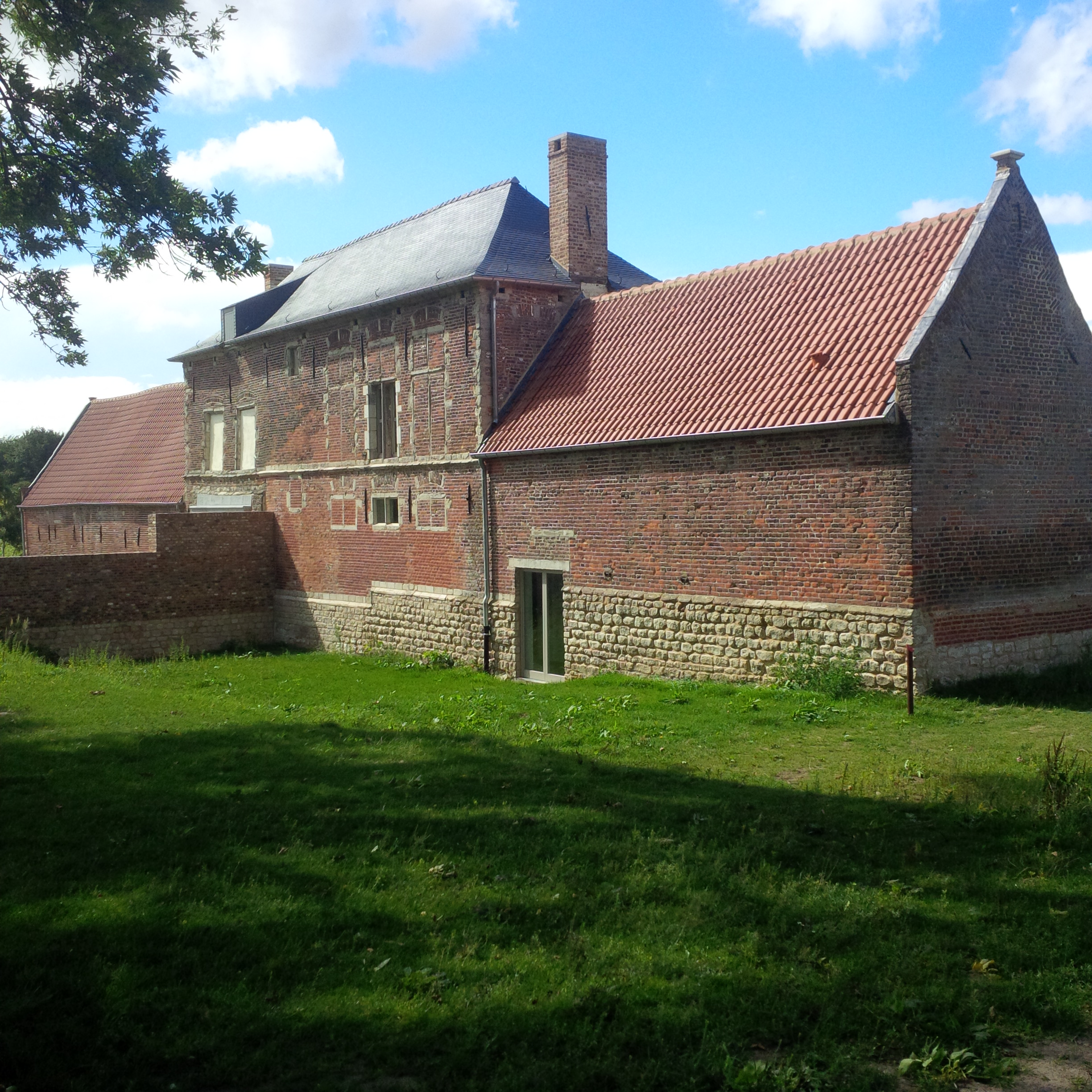
In preparation for the battle, Wellington fortified three farmhouses forward of his main lines. On the left flank was Papelotte which was captured during the battle by the French causing grave danger that the allied left flank would be turned. This would probably have cost the allies victory had not the Prussians arrived to retake it.
In the centre was La Haye Sante, while on the right was Hougoumont which the Allied Army had to hold at all costs especially after the loss of Papelotte.
And cost them it did; more than 7,500 soldiers of the allied army took part in the defence of Hougoumont of which more than ¹⁄3rd fell in the battle. If you think that is a lot, then consider that the French probably lost more than double that in their attempt to capture Hougoumont!
Such was the quantity of dead bodies at Hougoumont after the battle that, according to contemporary accounts, all attempts to bury the dead in mass graves failed and pyres were constructed that burnt for days.
This action is often described as, The Battle within the Battle and no visit to Waterloo should be without a visit here. A regular bus runs back and forth between the Visitor Centre and Hougoumont. This route must follow a similar route to that of the Royal Wagon Train which had to run, irrespective of the ebbs and flow of the battle, back and forth to Hougoumont in order to keep the defenders supplied with ammunition.
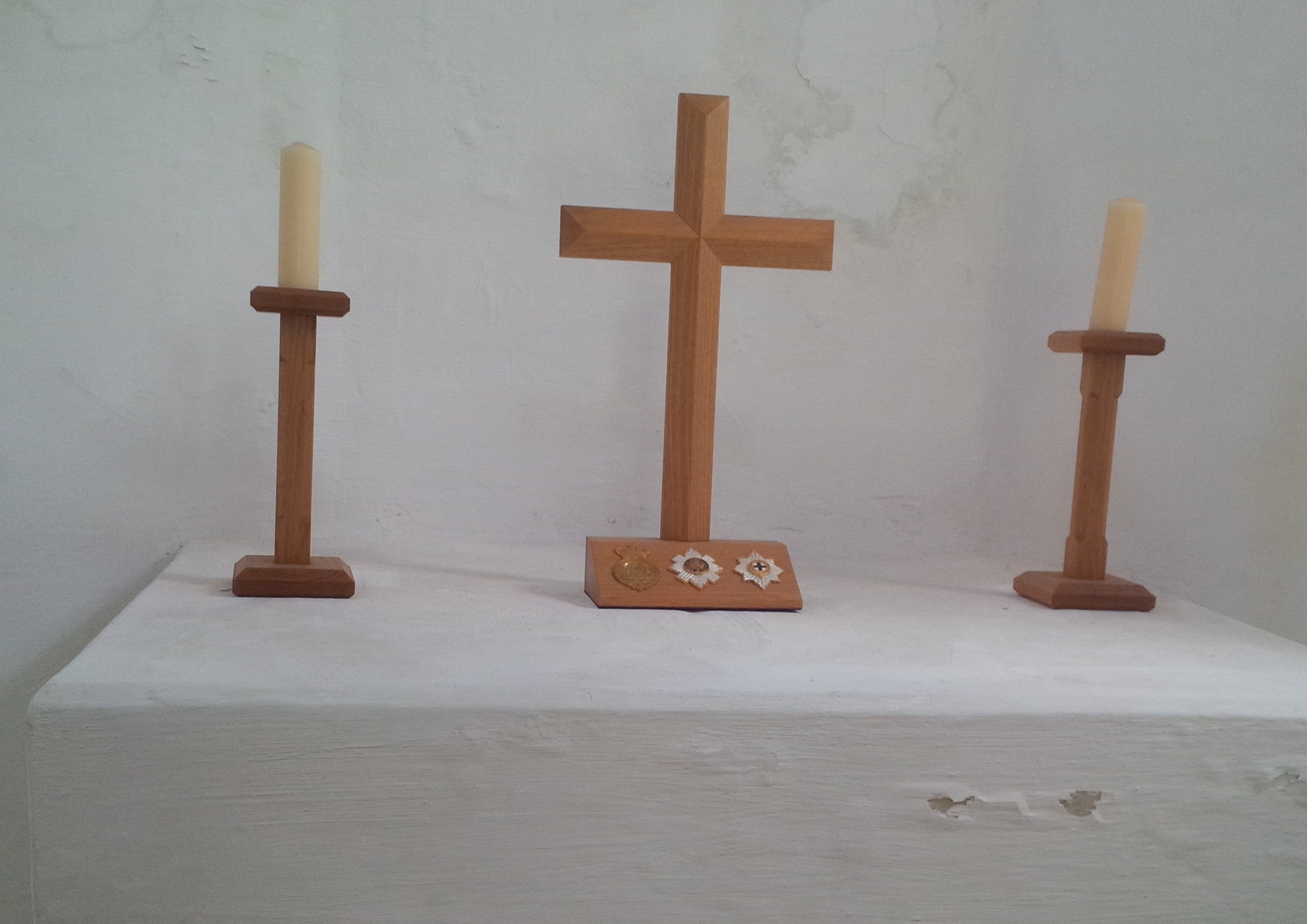
So important was the defence of Hougoumont that Wellington had, before the battle, supplemented its defence with elements of the First, Scots and Coldstream Guards (Note 7) and said afterwards, “No troops but the British could have held Hougoumont, and only the best of them at that.”
Notes:
- At the time of the Battle, Waterloo was part of the United Kingdom of the Netherlands. Belgium, as a nation, was not created until 1830.
- The actual site of the Lion’s Mound at Waterloo is to the right of the centre of Wellington’s Army. It commemorates the place where, during the battle, the Prince of Orange (the future William II of the Netherlands) was hit by a musket ball in the shoulder and knocked off his horse.
-
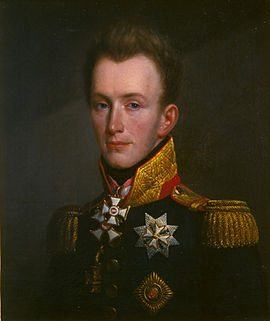
The Prince of Orange; a British Army Officer who was Wellington’s second-in-command at Waterloo The Prince of Orange had an interesting military career. He joined the British Army, and by 1811 was ADC to the Duke of Wellington taking part in several campaigns of the Peninsular War. He was promoted to Lieutenant Colonel in early 1811 and to Colonel later that year. On 8 September 1812 he was made an ADC to the Prince Regent and on 14 December 1813 promoted to Major-General. His courage and good nature made him very popular with the British, who nicknamed him “Slender Billy.” He returned to the Netherlands in 1813 when his father became sovereign prince, and in May 1814 succeeded Sir Thomas Graham as the commander of the British forces stationed there. On 8 July 1814, he was promoted to Lieutenant-General in the British Army and on 25 July to General. As such, he was the senior officer of the Allied army in the Low Countries when Napoleon escaped from Elba in 1815 but he relinquished command on the arrival of the Duke of Wellington, and took over Command of I Corps leading the Ally’s holding operation at the Battle of Quatre Bras (16 June 1815) and having a leading role at the Battle of Waterloo (18 June 1815). Effectively he was Wellington’s second-in-command.
- One of the consequences of the building of the Lion’s Mound was a change to the topography of part of the battlefield. Much of the soil for its construction was taken from the famous ridge behind which Wellington hid his troops from Napoléon’s view. Today the ridge is therefore less pronounced that it was at the time. Additional it meant the loss of the sunken lane in which Wellington hid his Guards Regiments in order to use them as “a surprise” against the advance of the French Guard in Napoléon’s final attempt to break the British lines. “Up, Guards, and at them again,” is believed to have been Wellington’s encouragement to the Guards Regiments in the sunken lane.
- The Battle of Waterloo was the third and final battle in Napoléon’s campaign in 1815 to beat the allies before they could all gang-up together to defeat him. To understand the campaign more fully it is worth studying the Battles of Ligny and Quatre Bras both of which preceded Waterloo by only a few days.
-
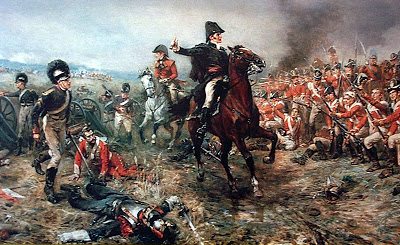
Painting of Wellington encouraging his troops; “Up Guards and at them again!” British foreign policy had not allowed for the possibility of Napoléon’s escape from Elba. Following the cessation of hostilities on continental Europe in 1814, the British Government had moved much of their experienced professional army to Canada. Consequently, the British contribution to the allied army at Waterloo consisted of a considerable element of inexperienced and fresh troops who had not fought in previous campaigns like the Peninsular War. One of the exceptions was the inclusion of significant elements of the Guards Regiments as they, at that time, were not used for operations other than those more close to home. The conflict in which British troops were involved in Canada is called the 1812-14 War. This was fought by the USA against Britain and its North American Colonies plus Native American allies. North Americans view this as a war in its own right yet Europeans view it as part of the Napoleonic Wars as it was caused by issues related to that war (especially the Continental System). The war resolved many issues which remained from the American Revolutionary War but resulted in no boundary changes. The United States declared war on 18th June 1812 for several reasons, including trade restrictions brought about by the British war with France, the Royal Navy “Pressing” US merchant sailors, British support for Native American tribes against European American expansion, outrage over insults to national honour after humiliations on the high seas, and possible US interest in annexing British territory in modern-day Canada. In 1814, British soldiers torched the White House, causing President James Madison (1751-1836) to flee in terror. This powerful gesture of anti-Americanism is often used as a chauvinistic symbol of pride by certain Canadian nationalists.
 Though the British government promised to respect the sovereignty of the United States after the Revolutionary War (1775-1783), a lot of British elites remained sceptical that the American experiment with independence would last. As a result, Anglo-American relations remained quite tense and disrespectful in the early 1800s, with the British Navy routinely harassing American ships, seizing their goods or forcibly kidnapping and drafting their sailors into British military service, offering only the justification that “once British, always British.”
Though the British government promised to respect the sovereignty of the United States after the Revolutionary War (1775-1783), a lot of British elites remained sceptical that the American experiment with independence would last. As a result, Anglo-American relations remained quite tense and disrespectful in the early 1800s, with the British Navy routinely harassing American ships, seizing their goods or forcibly kidnapping and drafting their sailors into British military service, offering only the justification that “once British, always British.”- By 1810, some American politicians (dubbed “the War Hawks“) had begun calling for a Second War of Independence against the British and demanding an attack on the British Forces in the Canadian colonies. This was very controversial as many in the USA feared that a second war against Britain could destroy them as the USA was a relatively small and poor nation that was ill-equipped to fight against a powerful country like Britain. But by 1812 the Hawks had won the debate, and the U.S. Congress narrowly voted in favour of war.
-

French Grenadier Officer of the Imperial Guard The First Guards (or more properly, The First Regiment of Foot Guards) were granted the name “Grenadier” in July 1815 by Royal Proclamation and the Regiment has since been called the Grenadier Guards (or, more properly, The First or Grenadier Regiment of Foot Guards). The change of name was the result of a mistaken belief that the Regiment had defeated the Grenadiers of the French Imperial Guard at the Battle of Waterloo, whereas they had actually engaged and defeated the Chasseurs of the Middle Guard. The confusion arose because, whilst it was a tradition for Grenadier Regiments (of many nations especially the French) to wear bearskin caps, the Chasseurs of the Middle Guard also wore bearskin caps similar to those of the Grenadiers of the French Imperial Guard. Following their name change, the British Grenadier Guards were permitted to wear the bearskin and in 1831 this practice was extended to the other two regiments of Foot Guards then in existence, the Scots Guards and the Coldstream Guards.
